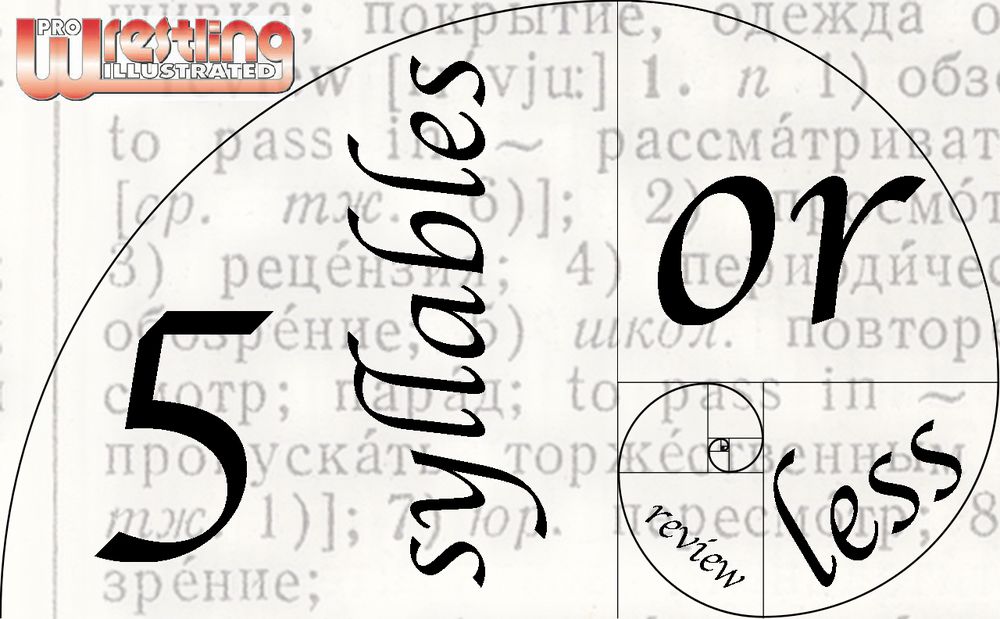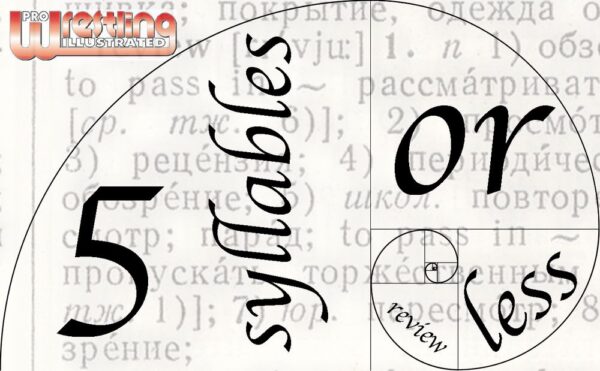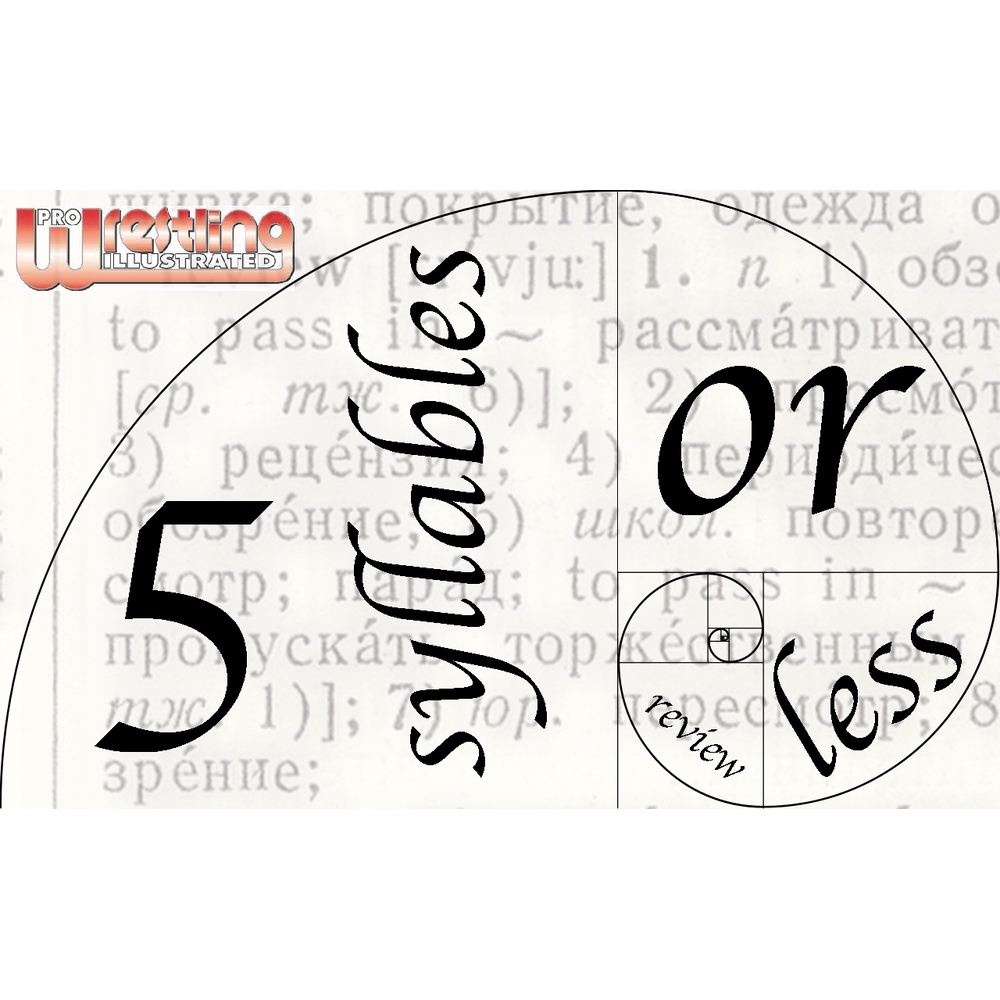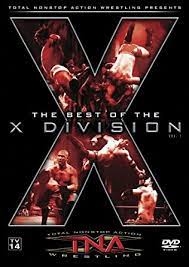Beyond the pages of Pro Wrestling Illustrated, here is the extended version of our written conversation with freelance joshi standout Miyuki Takase, which formed the basis of our “One To Watch” feature in the October 2023 edition of PWI magazine. Our special thanks to Mr. Haku for his assistance with conducting and translating the interview.
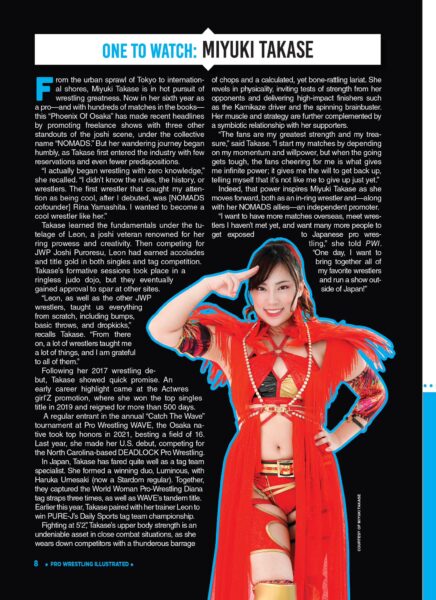
PWI: What are some of your earliest memories of wrestling? Who were the performers that drew you to the sport?
Takase: I actually began wrestling with zero knowledge; I didn’t know the rules, the history, or wrestlers. The first wrestler that caught my attention as being cool, after I debuted, was Rina Yamashita. I wanted to become a cool wrestler like her. Years removed, I think I can safely say that I had an eye for talent from the outset!
PWI: Who trained you? Where and when was your debut?
Takase: My debut match was on January 15, 2017, at Shinkiba 1st Ring. The wrestler that taught me how to bump was Leon, from JWP (currently PURE-J). Initially, we only trained a few times a month at a Judo dojo that didn’t even have a ring. Eventually, we were allowed to train at dojos of other promotions, and Leon as well as the other JPW wrestlers taught us everything from scratch, including bumps, basic throws, dropkicks, etc. From there on, a lot of wrestlers taught me a lot of things, and I am grateful to all of them.
PWI: Share a bit about your signature moves, move set, and finisher.
Takase: I’ve used the Kamikaze ever since my debut; it’s a move that Ricky Fuji gave me permission to use. I also use the Rolling Stone (spinning brainbuster), which Ricky Fuji named for me, too. Other than that, the fans might associate me with the backhand chop and lariat.
PWI: What are some of your biggest accomplishments and bouts to date?
Takase: Winning the “Catch The Wave” singles league (round-robin tournament), which featured a lot of participants with much longer careers than mine.
PWI: You’ve had some great runs as a tag team wrestler; what does tag team competition offer to you that is different from your work as a singles competitor?
Takase: I am attracted to the fact that you can accomplish things in a tag team that you cannot do alone. 1 + 1 can be more than 2, even 10 or 20. I also learn a lot from my partners; not just moves and techniques, but also about looks, presentation, etc. I also attempt to, and enjoy, making my partner shine.
PWI: You show incredible ability to withstand pain and to come back against your opponent stronger and stronger as the match goes on. How do you explain this?
Takase: During my matches, I listen a lot to the seconds [wrestlers in Takase’s corner] and fans. I start my matches by depending on my momentum and willpower, but when the going gets tough, the fans cheering for me is what gives me infinite power; it gives me the will to get back up, telling myself that it’s not like me to give up just yet. The cheering sinks in deeper when my situation is particularly dire. The fans are my greatest strength and my treasure, so I am really happy that vocal cheering is back at shows.
PWI: What are your goals for the future?
Takase: I want to have more matches overseas, meet wrestlers I haven’t met yet, and want many more people to get exposed to Japanese pro wrestling. I want to enjoy pro wrestling together with all of those people. One day, I want to bring together all of my favorite wrestlers and run a show outside of Japan!
Learn about freelance wrestling promotions in Japan, including NOMADS (cofounded by Miyuki Takase, Rina Yamashita, and others) via the video below from Karen Watches Wrestling:

